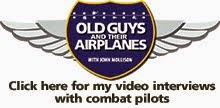"It's like riding a bicycle with a 25 foot long two x four strapped across the handlebars!" he stated (somewhat) proudly.
But the more I thought about it, it seemed as if he was soft pedaling it a bit. Sure, the analogy itself was basically correct, but his version made it seem too easy. Instead, I came up with a better one. So let me rephrase the quote, "It's like two guys on unicycles holding onto the ends of a 60' pipe. Strapped across is a 104 foot 2 x 4. And they're riding at 100 miles per hour."
There. I fixed Stan's analogy of what it's like to land a U-2R.
Hold that thought and have a look above. Behold "The Dragon Lady" in all her spectral glory.
Though her lines are simple and easy to draw, it was an especially challenging airplane to do. For one, the black paint is rough and reflects light in peculiar ways. If you look hard enough, you'll see that the "light source" I used to mentally guide my work is physically impossible. But I had to in order to show the distinctive features of the airplane.
Secondly, U2-Rs are shape-shifters—pods, antennas and bumps can come-on/off like Lego® blocks. Of the 60 second-generation U-2s built they’re all a little different depending on the mission. Photographs don't help either as the black finish shows little detail. Stan talked me through the airplane's progress as best he could, but I bet we're missing a bump or wire somewhere.
But third, the real difficulty in drawing the airplane is that it there's no way to capture the amazing performance envelope. An F-4? Sure. Hang a bunch of ordnance under the wings. A P-51? Sure. Add a row of swastikas under the cockpit and you're good. But the U-2?! It's a black tube with fins.
And that gets us to the question, "So what IS so amazing about the performance envelope?"
"If you're going to understand the U-2, you have to understand where it flies. And that's at very high altitude. And things are different up there," stated Rauch. "That's why it needs those long wings with the 1000 square feet of surface. To generate all the lift it can."
In case you're not a wing nut, the long wing isn't necessarily needed to climb to altitude. It's needed to maintain altitude. At 70,000+ feet, the air is exponentially 'thinner' than at, say, 35,000 feet where airliners typically fly. In fact, take a 757 and lift it to 70,000 feet and it'll stall, sink and plummet, ripping itself apart long before it gets back to a normal altitude. But the U-2's wing is big enough to keep the U-2's light weight aloft in this "boundary-layer before outer-space" realm.
And that's why the U-2 pilots wear space suits. Fully pressurized, the pilots work inside their hermetically sealed environment, breathing 100% oxygen (the rest of us breath more like 21% oxygen). Above, the sky—if you can call it that—is pure black and blends into the purest of blues to a curved horizon.
In spite of the sometimes hazardous missions, Stan was quick to point out that it's "peaceful up there." In the rarified atmosphere, there's no tail wind, head wind, no drift, no nothing other than the thrust of the engine. Calculating ETAs between bases becomes an exercise in precision. No airplane can nail their "arrival time" like a U-2. However, though the air is smooth and horizon vast, the flight envelope is small. Very small.
How small? Well, cruising at 70,000+, the maximum speed (VNe) and the stall speed (Vs) are only 10 knots apart.
Go ahead and read that again. 10. Knots. Apart.
If those figures don't mean anything to you, imagine driving a motorcycle at 65 miles per hour in LA traffic. Ten feet behind is a semi trailer loaded with steel. Ten feet ahead is a semi-trailer loaded with gasoline. And there are semi's to the sides, too. Whatever you do, you have to do carefully, methodically and precisely. Because if you don't...
"You mustn't stall a U-2 at altitude. If the wing loses lift, it's not going to get it back. By the time the airplane gets to denser air, the airplane has probably already spin itself into pieces due to g-forces. The tail will go first."
You've probably figured out that the U-2 is rather delicate. Compared to an F-16 fighter, a U-2 can only handle a relatively small g-force load. So, flying it operationally is an exercise in extremely precise flight management; so precise, it's not really humanly possible. Go ahead and read that again. Not. Really. Humanly. Possible.
"You get on autopilot when you are operating in the higher altitudes, " Stan explained. "You can handle (flying manually) for up to around 50,000 feet, but it's a sensitive airplane and it can get out of control very quickly. At the highest altitudes, (Human) reactions just aren't that fast."
"So is that why the U-2 is so hard to fly?"
"No. The autopilot is a great system and I never doubted its performance. Sure, the environment is tough, but the U-2 does it really well. The real challenge of flying the U-2 is landing it.
Ok. Before I get back to the unicycle and 104 foot two x four analogy, watch the video below.
If you noticed, the U-2 accelerated very quickly and almost instantly disappeared into the clouds. In fact, a U-2 can climb out at 70 degrees with a light fuel load. That's getting close to dang near vertical. And did you notice how quickly it got off the ground? That's because the wing that works so hard at 70,000ft is hyper-performing at ground level. If the U-2 has a 'problem' it isn't that it's too delicate or too tricky. It's that down low, flies too well.
Ok. See the airplane below? That's my drawing of Dick Rutan's "Voyager" aircraft. It was the first airplane to fly around the world without landing. It's a brilliant piece of engineering—ultra light weight, hyper-efficient engines and...look at that wing. Long, skinny, it slices through the air like a samurai sword and lifts like an elevator.
Regarded as one of the great innovations in aeronautical design, the Voyager wing has a Lift:Drag ratio of 27. Meaning, it lifts 27x more than the resistance it creates by moving through the air. In comparison, a seagull wing(s), which can cruise along the sea-driven breezes for seemingly hours, is about a 10. But a U-2?
28+.
"Landing is the hard part." Stan says flatly. "That's the last 30 seconds of the mission that might have been 9 to 11 hours in length.”
Ok. You probably noticed in the U-2 clip that the landing gear is a little odd. It's a bicycle-style set up with a wheel in front and a smaller wheel in back. And if you look out at the tips of the ginormous wings, there are skinny, plug-in wheel assemblies called pogos that drop-off as soon as the wings produce lift on takeoff. They're NOT landing gear. Instead, the proper name is, “ground taxi wing support gear.”
And did you see the red Pontiac G8? That's the chase-car team and it’s commanded by another U-2 pilot. The team’s job is to drive behind the aircraft during the landing phase and radio to the pilot the distance in feet between the landing gear and the runway.
The Approach of a U-2 to the runway is carefully managed. And here's where Stan's analogy of the bicycle comes into play. Since the landing gear affects the ground on a single axis, the airplane is extraordinarily sensitive to cross winds. Anything more than 15kts is too much. (A 747 can handle about 30-40kts).
The trick is getting the wing to stop working. Spoilers—flaps of metal that pop up to 'spoil' the wing's lift—speed brakes and huge flaps are all used to negate all that glorious flying power. On final approach, the pilot is using a mixture of lift negating devices, retarding of throttle and judicious inputs of rudder to keep the airplane on a very controlled descent and lined up perfectly on the runway centerline. Crossing the numbers (the numbers at the end of each runway), the U-2 should be at about 40 feet and traveling at 110 mph with the speed decreasing. This is why the chase-car team drives faster cars.
Coaxing, tuning and cajoling the Dragon Lady to earth, the pilot hears a steady report of altitude from the chase-car - 10 feet. 9 feet. 8 feet...and when the pilot hears 1 foot he holds the aircraft in that position and then all of that glorious wing stalls and the aircraft settles gently to the runway, and...*erk!* He's steering a big, black bicycle down the runway. At about 90 miles an hour.
Ok. Have another look at my drawing. If you notice the wingtip, there's a slight white line. And if you notice up-close, you'll see there are tiny jags on the bottom like a saw blade. Those are skids...because eventually the wing WILL* lose its ability to keep parallel to the ground and one tip will dip. And drag a short distance.
It's a unique operation to be sure. The chase team catches up and two guys run up with those pogos, lift the wing up, insert them, and the U-2 pilot taxis back to the hardstand as if nothing weird happened.
Extraordinary airplane. And flown and crewed by extraordinary people. And, proof-positive that the forces of nature, though powerful, can be mitigated with a little thinking, confidence and skill. Ok, a lot of thinking, confidence and skill.
So where did Stan 'get' all that thinking, confidence and skill? Surprisingly, it wasn't by flying high. Instead, it was by flying low in…well, more about that next year.
2015 is setting up to be a great one for—as I say—talking to "old guys and drawing their airplanes."
*Stan says that in a strong enough headwind, the wings start trying to lift the airplane before it even begins its take-off run.
Oh. And two more things. See that little white sliver by the tail? That's a tail trim position indicator. The tail flight surfaces of a U-2 can pivot forward or backwards (slightly)as a single unit to trim the aircraft for increased stability in flight. And in case you're wondering if the U-2 is damaged by dragging its wing along the ground, it isn't. Through careful flying, by the time the tip hits the ground, the U-2's speed is low enough that the friction between the tip and ground doesn't generate forces beyond the airframe limits.









































